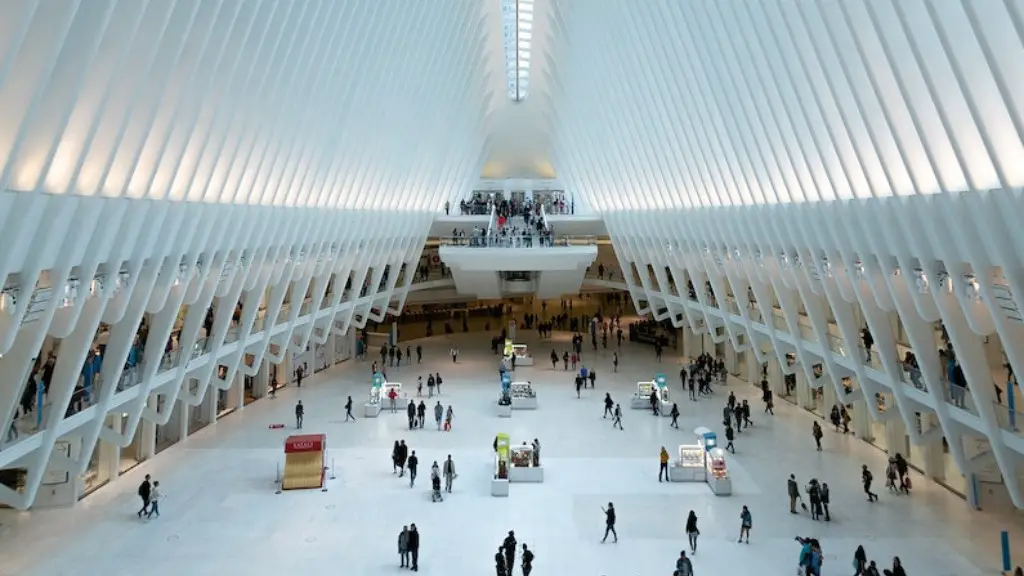How Technology Affects Architecture
Architecture has been structured and designed for thousands of years, with currents traversing through various civilizations and eras. From the Roman coliseum to the Burj in Dubai, architectures have adapted to the resources and tools available in the era. With the introduction of technology, design and construction of buildings has been revolutionised, bringing along numerous advantages and challenges.
Research shows that one of the most significant changes brought by technology is that it has enabled the development of simpler ways of analysing data in architecture. Through the aid of computer aided designs (CAD) and building Information Modelling (BIM), architects are able to use three dimensional models to analyse the design elements and components of a structure in great detail. Apart from aiding in planning and designing, BIM Technology can also be used for optimising materials, reduce labour time and most importantly with interpreting data. The ability to take into account various components such as the material cost, size, formation and the building environment provides immense help in the construction process.
Moreover, the introduction of technology related tools has also enabled the highly skilled labour force to work with increased efficiency. This has drastically cut down the time required to complete a construction, while providing quality assurance. According to a 2020 survey, the use of robotic automation and integration of computers in construction process has enabled a construction project that previously used to take five years to complete, to be finished in just under a year. Thus technology has enabled the building to be completed in much shorter period of time while maintaining higher standards of quality and reducing the cost.
However, a potential downside of this connection between technology and architecture is the interaction between technology and the environment. Architectural structures using technological systems usually come with system maintenance requirements which in some cases can have adverse effects on the environment. Research has also shown that integration of technology has been linked to increasing levels of emissions from the embodied energy from the building. Nevertheless, there are ways to reduce these emissions through energy efficient technology.
Lastly, with the introduction of technology in architecture, the landscape of architecture has been changed drastically. With the help of technology and experienced architects, architectural structures are now able to be more ambitious and daring. Apart from this, there is also faster and easier access to resources, materials, and new ideas and concepts, allowing architects to either collaborate more effectively or customise their own designs.
Integration of Technology in the Planning Process
In addition to the construction process, the use of technology has also impacted the planning process of architecture. Designers and architects have been able to incorporate technological tools into the planning process to better assess the structure and identify areas suitable for further development and streamline the production process. Through using technological resources such as AR and VR, designers are able to view the structure in its entirety and assess the exact measurements with accuracy. This practice of augmented reality and virtual reality is not only beneficial in the designing process but also when it comes to construction. With the help of technology, architects are able to access even the most detailed and remote areas of the work and analyse them remotely.
Apart from this, technology also provides a platform to test structures and components remotely and effectively. This practice is largely beneficial in the safety and stability of the structure. By simulating elements, architects are able to understand the conditions of the building if certain changes were to be made and if certain conditions affected the structure in a particular manner. This process has made possible the development of adaptive structures for various environments, making the architecture even more effective.
Connection between Technology and Cultural Identity
In addition to its role in the planning and constructing process, technology has also had a profound effect on the cultural identity and heritage of different architectures. Through the introduction of various technological processes, authorities have been able to preserve various types of architectures that have served as a source of identity for many civilisations and communities. Through the process of digitalisation, buildings and monuments from centuries ago can be preserved, ensuring that the cultural and historical value of the architecture is maintained.
Apart from preserving the traditional values and values, technology has also enabled architects to come up with creative and modern designs while still maintaining the traditions. Through the mediums of digitalisation, designers can analyse the design elements and develop the architecture accordingly, while maintaining the traditions and the beliefs of the certain people within which a particular architecture lies.
Impact of Technology on Sustainability
Finally, the introduction of technology has also enabled designers to come up with creative and sustainable solutions to design an architecture. Through the study of environmental factors, architects and designers can now come up with better solutions that can address the issues such as energy consumption, air pollution and global warming. For example, green buildings are used for harnessing the natural resources such as heat and energy to generate electricity and reduce energy consumption.
Sustainable architectures have also been able to reduce the carbon footprint left on the environment by using green building materials and integrated technologies such as solar panels. Thus not only does this reduce the emissions from the structure but also aids in the preservation of the planet’s resources.
Methods Used to Promote Innovation in Architecture
Apart from its use in the process of actual construction, technology has also been integrated into the promotion and marketing of architecture. Through the usage of online platforms such as websites and social media platforms, more efficient and diverse ways of advertising architecture have been enabled.
Moreover, online presence has helped architects in reaching a large audience and has provided another medium to connect with potential customers. Additionally, architects and designers can use virtual tours and simulations to promote their work, aiding in the marketing of their projects in a more efficient manner.
Example of Technology Used in Architecture
Throughout the world, various types of architectures are coming up with solutions that are using technology to its fullest. An example of this is the Moor House where the designers incorporated a system of solar panels and geothermal heating to reduce emissions and energy consumption from the building. Additionally, lightbulbs within the building were designed to be energy efficient and the building was also designed to maintain a constant temperature throughout the day, with the help of the integrated technological solutions.
Connecting Designers with Local Resources
Finally, technology has also enabled architects and designers to connect with the local resources available within their area and overseas. Through the use of the internet, designers and architects are now able to access materials and resources from all around the world and analyse the cultural variations and practices within different countries. This enables them to create architectures that maintain the values of the surrounding area while incorporating merged practices from other countries.
Additionally, the use of platforms such as BuildingConnected has enabled them to find potential workers and skilled labour force that are available within their area, and enable them to start their construction process with maximum efficiency and in a shorter timeframe.




